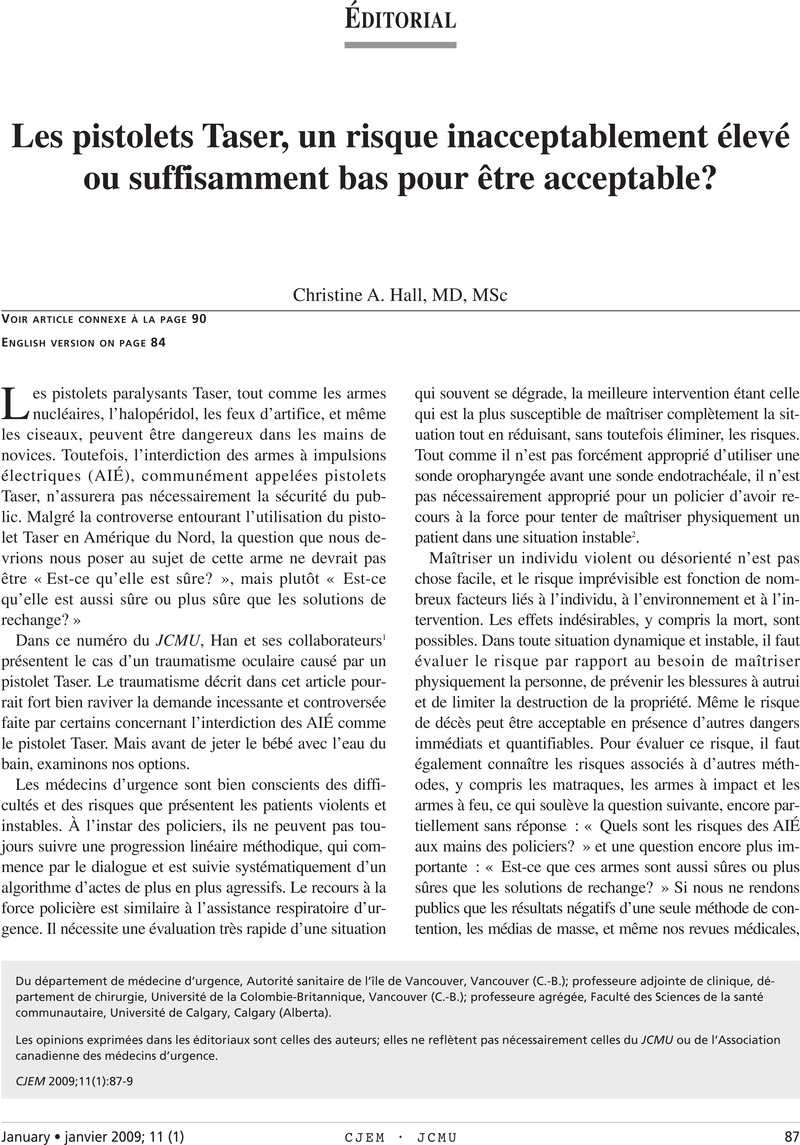Affiliation: département de médecine d'urgence, Autorité sanitaire de l'île de Vancouver, Vancouver (C.-B.); département de chirurgie, Université de la Colombie-Britannique, Vancouver (C.-B.); Faculté des Sciences de la santé communautaire, Université de Calgary, Calgary (Alberta)
